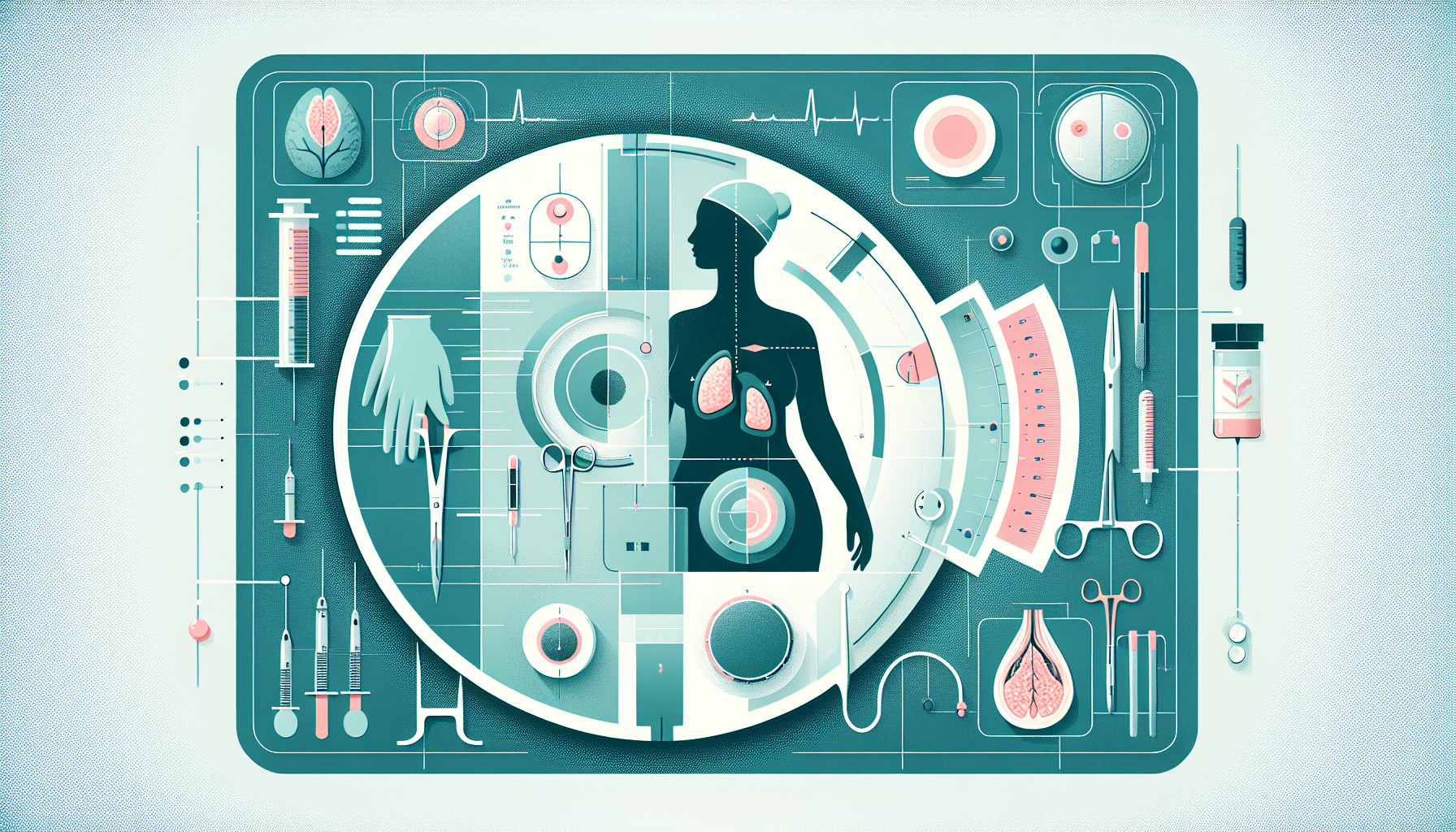Our Summary
This research paper is about a study that investigated the use of magnetic resonance imaging (MRI) to identify leftover breast tissue after robotic-assisted nipple-sparing mastectomy (R-NSM), a surgical procedure for breast cancer that tries to retain the patient’s nipple. The leftover tissue (RBT) can pose a risk for cancer recurrence or new cancer development after the surgery.
The study was conducted on 105 women who had undergone R-NSM for breast cancer at the Changhua Christian Hospital between March 2017 and May 2022. The researchers used postoperative MRI to check for leftover breast tissue in these patients.
The results showed that leftover tissue was found in 13% of the surgeries. Most of this leftover tissue was located behind the nipple-areolar complex. Among the patients who had leftover tissue after their surgeries for treatment, only one developed a cancer recurrence in the skin flap. The other patients remained disease-free.
The researchers concluded that R-NSM does not seem to increase the prevalence of leftover tissue, and that MRI is a feasible non-invasive tool for detecting and locating this leftover tissue.
FAQs
- What is the purpose of using MRI after robotic-assisted nipple-sparing mastectomy (R-NSM)?
- What percentage of patients had leftover tissue after undergoing R-NSM, according to the study?
- What was the conclusion of the researchers in regard to the presence of leftover tissue after R-NSM and the use of MRI for detection?
Doctor’s Tip
A helpful tip a doctor might give to a patient who has undergone a mastectomy is to make sure to follow up regularly with imaging studies such as MRI to monitor for any leftover breast tissue that could potentially pose a risk for cancer recurrence. It is important to stay vigilant and proactive in monitoring your health post-surgery to ensure the best possible outcome.
Suitable For
Patients who are typically recommended for mastectomy include those with:
- High risk of breast cancer recurrence or new cancer development, such as those with a strong family history of breast cancer or a genetic mutation (e.g., BRCA1 or BRCA2).
- Large tumors that cannot be effectively treated with lumpectomy or radiation therapy.
- Multicentric or multifocal breast cancer.
- Inflammatory breast cancer.
- Recurrent breast cancer.
- Patients who have undergone previous radiation therapy to the breast.
- Patients who choose mastectomy as a risk-reducing measure for breast cancer prevention.
It is important for patients to discuss their individual risk factors and treatment options with their healthcare providers to determine the most appropriate course of action.
Timeline
Timeline of a patient’s experience before and after mastectomy:
Before mastectomy:
- Patient is diagnosed with breast cancer through screening or diagnostic tests.
- Patient discusses treatment options with their healthcare team, including the possibility of a mastectomy.
- Patient undergoes preoperative assessments, such as physical exams, imaging tests, and blood work.
- Patient receives counseling and support to prepare for the physical and emotional aspects of the surgery.
- Patient schedules the mastectomy surgery and makes necessary arrangements for recovery.
After mastectomy:
- Patient undergoes the mastectomy surgery, which may involve removal of one or both breasts.
- Patient stays in the hospital for a few days for recovery and monitoring.
- Patient experiences postoperative pain, swelling, and discomfort, which are managed with pain medications and other interventions.
- Patient may need to wear a compression garment or bra to support the surgical site and promote healing.
- Patient may undergo additional treatments, such as chemotherapy or radiation therapy, to further treat the cancer.
- Patient attends follow-up appointments with their healthcare team to monitor recovery, assess for complications, and discuss next steps for treatment and care.
- Patient may consider breast reconstruction options to restore the appearance of their breasts.
- Patient receives ongoing support and counseling to cope with the physical and emotional effects of the mastectomy and cancer diagnosis.
What to Ask Your Doctor
What is the likelihood of having leftover breast tissue after a robotic-assisted nipple-sparing mastectomy?
How can leftover breast tissue pose a risk for cancer recurrence or new cancer development?
What are the benefits of using MRI to identify leftover breast tissue after R-NSM?
How soon after surgery should an MRI be performed to check for leftover tissue?
What are the potential treatment options if leftover breast tissue is found?
How often should follow-up MRIs be done to monitor for any changes in leftover tissue?
Are there any symptoms or signs that may indicate the presence of leftover breast tissue after R-NSM?
How does the location of leftover tissue, such as behind the nipple-areolar complex, affect the risk of cancer recurrence?
What are the overall outcomes and risks associated with having leftover breast tissue after R-NSM?
Are there any lifestyle changes or preventive measures that can help reduce the risk of cancer recurrence in patients with leftover breast tissue?
Reference
Authors: Wu WP, Lai HW, Liao CY, Lin J, Huang HI, Chen ST, Chou CT, Chen DR. Journal: Korean J Radiol. 2023 Jul;24(7):640-646. doi: 10.3348/kjr.2022.0708. PMID: 37404106
